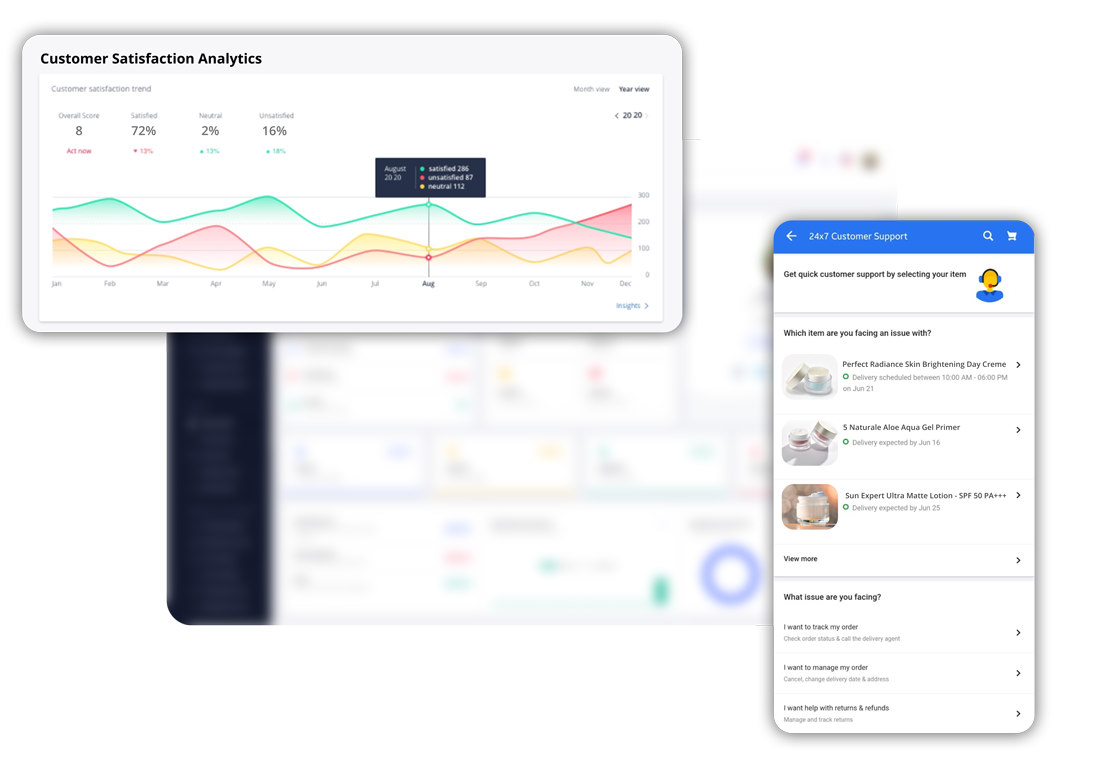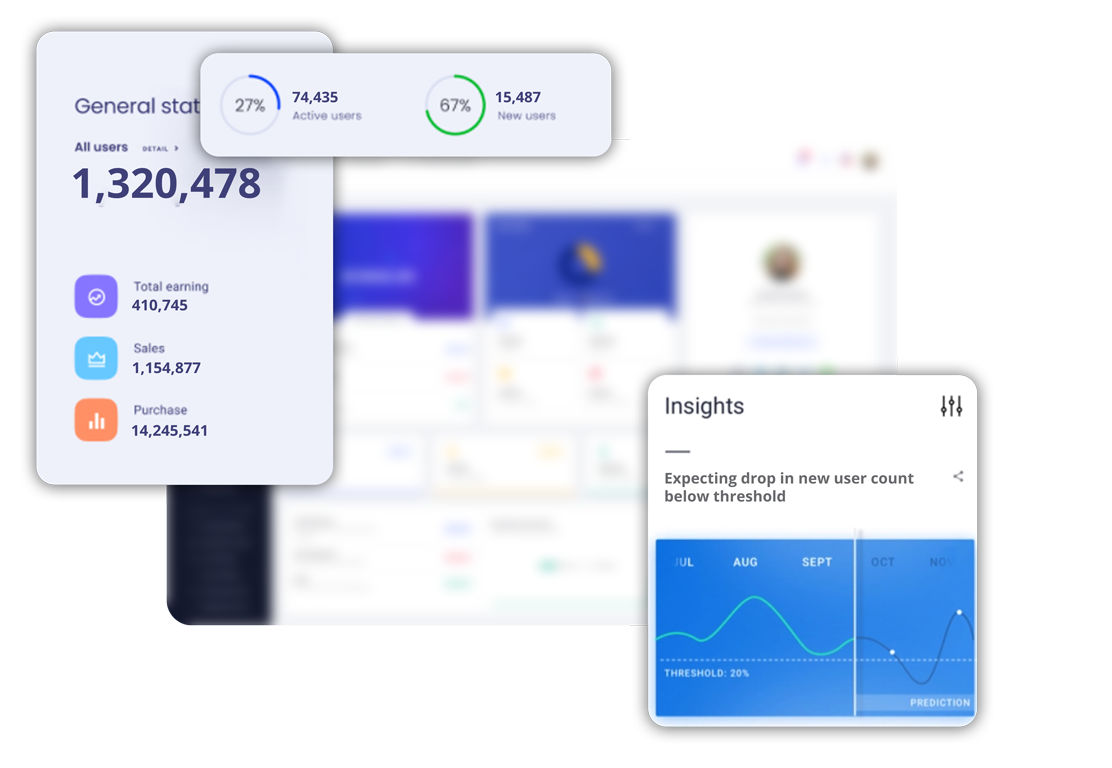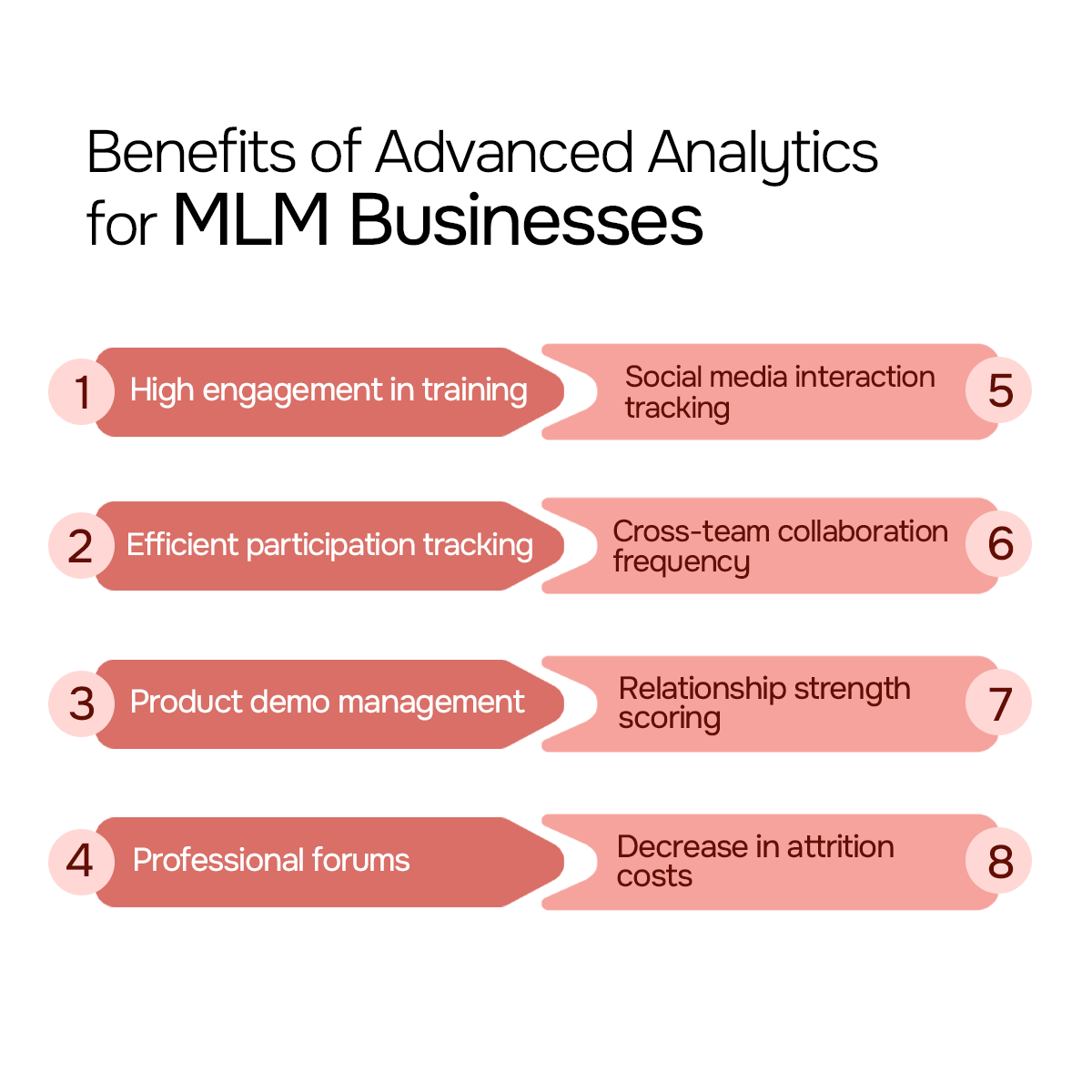The direct selling industry is predicted to generate an annual revenue of $215.12 billion in 2025, globally. Growing at a steady CAGR of 6.1% since 2022, it is a lucrative business venture that attracts millions of entrepreneurs annually. However, even in this aggressive and competitive market, the reality is that over 50% of new distributors and MLM businesses leave this business in their first year. This may be due to many factors and bottlenecks.
Why the disconnect? The answer does not lie in the lack of opportunity—but in a lack of insight.
Considering the current technological evolution and the speed at which the direct selling sector is expanding, it is evident that raw effort alone doesn’t guarantee growth. Growth in this industry demands a constant eye for trends, adaptation and high flexibility to change. We can safely say that it's the organizations that master strategic analytics—beyond simple KPIs—are the ones who dominate the market.
With this perspective, top MLM entrepreneurs are now sprinting past traditional dashboards and turning their preferences towards MLM analytics ecosystems. These track market patterns and predict consumer behavior. An essential tool for efficient operations, analytics dashboards also help businesses in profitable decision-making.
On that note, let’s explore how you can optimize the next-gen analytics dashboards for scalable growth of your direct selling business in 2025.
Moving from metrics to meaning
Historically, MLM analytics focus on superficial indicators such as distributor counts, sales volume, commission earnings. While these criteria are still important, they offer only a concise and undetailed view of a complex, interconnected business sector. According to a report by the Direct Selling Association (DSA), 82% of network marketing professionals continue to rely on these basic metrics for their sales and marketing plans.
That said, the leading network marketing companies understand that correlating behaviors across platforms—from social engagement to distributor training participation is what will bring an edge to their business strategy.
This is a vertical shift from isolated metrics to strategic insights. MLM businesses can upgrade their operations from traditional reactive management to the latest—predictive leadership.
Building the next-generation analytics ecosystem
As the direct selling industry becomes more data-driven, the next-generation data analytics ecosystem is evolving beyond simple metrics to incorporate sophisticated insights that drive meaningful change. Industry leaders work with advanced tools to not just track basic market analytics but study the entire market-sales cycle. From training completion rates to peer interactions and sales activities. By connecting and analyzing disparate data points across the distributor experience, businesses can gain deeper insights into engagement patterns, relationship dynamics, and even predict potential attrition risks.
Let’s talk about how this next-gen approach is reshaping the MLM sector. Starting with behavioral engagement mapping, and followed by relationship velocity and strength, and predictive attrition analysis.
1. Behavioral engagement mapping
Simple engagement metrics like login counts don’t provide a full picture of a distributor’s activity. To get a deep insight into the entire behavioral transition of the distributor recruitment and performance cycle—an advanced dashboard is the way to go. Starting from recruitment, training till sales, the dashboard can analyze and monitor distributor patterns such as:
Completion rates of training modules – A research report by DSA 2024 shows that distributors who complete onboarding within 30 days are 40% more likely to remain active after 12 months.

Participation tracking – Participation and networking is an important part of being a distributor. The dashboard also tracks active participation of distributors in live events and webinars.
Product sampling and demo activity – Distributors engaging in product demos are directly driving sales and customer relationships. Product sales trends and engagement analytics aids MLM businesses in identifying the distributors who are more proactive.
Peer-to-peer support interactions – Collaboration with peers strengthens community and increases retention. Identifying distributors who engage with their team can help leaders foster stronger connections within their groups.
2. Relationship velocity and strength
Relationship velocity refers to the speed and depth of distributor connections. This is the latest key performance indicator to measure distributor engagement in the direct selling industry. Internal case studies from major MLM firms reveal that distributors who build five or more meaningful peer relationships within their first 90 days achieve 62% higher average sales (MLM Business Insider, 2024).
Integrating the analytics dashboard helps businesses in mapping relational ecosystems. Entrepreneurs can identify potential candidates for customer relations early—and nurture their impact in their sales strategy accordingly.

Advanced dashboards now integrate:
Social media interaction tracking
Cross-team collaboration frequency
Relationship strength scoring
3. Predictive attrition analysis
Attrition costs network marketing companies millions annually.
Modern dashboards optimize predictive modeling to analyze small behavior shifts—like reduced training engagement or declining order sizes—and forecast disengagement risk. With predictive accuracy exceeding 78% (Salesforce State of Analytics Report, 2024), these systems allow preemptive outreach to at-risk distributors before it's too late.

Besides just alerts, advanced platforms suggest personalized retention tactics based on individual engagement profiles.

Turning insight into action
Raw data means little without execution.
Next-generation MLM platforms are integrating automated action systems directly into their analytics dashboards.
1. Micro-learning deployment
When dashboards detect skill gaps, systems immediately deploy micro-learning modules—targeted, digestible lessons that address real-time needs.
As per the Training Industry Report of 2024, companies using adaptive learning saw 32% faster knowledge retention for new distributors as compared to traditional teaching programs.
2. Dynamic incentive targeting
Another way of increasing your distributor engagement rate is to deploy smart systems to launch precision incentives. Rather than relying on the traditional one-size-fits-all bonus system, MLM business owners can integrate result-based incentives. These can be work on real-time performance triggers to maximize team motivation and boost morale. Research indicates that dynamically tailored incentives can boost distributor productivity by 27% (Incentive Research Foundation, 2024).
3. Cross-pollination networking
Advanced analytics can identify how teams can work with different departments in the company. An advanced dashboard can facilitate introductions between distributors across teams and help them coordinate. This algorithmic networking leads to 18–24% higher team productivity.
Discover how we build resilient businesses with advanced MLM functionalities
Analytics technology trends for starting an MLM business in 2025
For network marketing entrepreneurs ready to transcend basic reporting, here are the latest technologies you can incorporate to build a strategic analytics ecosystem for your MLM business:
Data integration: Connect ordering, training, communication, and CRM systems into a unified platform.
Behavioral pattern mining: This tool provides valuable insights into the actions distributors need to take. This allows companies to optimize distributor activities and boost overall performance.
Smart alerts: Implement intelligent, segment-specific performance thresholds.
Actionable dashboards: Design systems where every insight triggers a recommended next step.
Continuous optimization: Regularly update dashboards based on emerging trends and distributor feedback.
Top technological Trends for MLM Businesses
- Data integration
- Behavioral pattern mining
- Smart alerts
- Advanced analytics dashboards
- Consistent optimization
Conclusion
Since the direct selling market is growing more and more competitive, and the distributor expectations are on an all-time rise—basic tracking tools are not enough.
The real heroes of the MLM industry in 2025 and beyond will be those who utilize strategic, predictive analytics to power every decision.
Going by the Salesforce State of Analytics report, companies that integrate predictive analytics into their core operations are 2.9x more likely to outperform their colleagues. Adding to that, the Direct Selling Association states that organizations investing in data-driven distributor support systems report 35% higher retention rates.
On a philosophical note, the future belongs to those who don't just measure what has happened but who predict what can happen and act accordingly. In simpler words, by transforming data into real-time, actionable strategy—MLM entrepreneurs won’t just survive the next wave of industry evolution; they’ll lead it. In a data-rich world, insight and decisive action will be the ultimate competitive advantage.









Leave your comment
Fill up and remark your valuable comment.